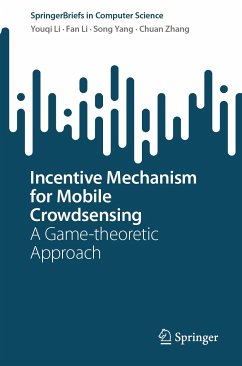This book sheds light on the design of incentive mechanisms for MCS in the context of game theory. Particularly, this book presents several game-theoretic models for MCS in different scenarios. In Chapter 1, the authors present an overview of MCS and state the significance of incentive mechanism for MCS. Then, in Chapter 2, 3, 4, and 5, the authors propose a long-term incentive mechanism, a fair incentive mechanism, a collaborative incentive mechanism, and a coopetition-aware incentive mechanism for MCS, respectively. Finally, Chapter 6 summarizes this book and point out the future directions.
This book is of particular interest to the readers and researchers in the field of IoT research, especially in the interdisciplinary field of network economics and IoT.
Dieser Download kann aus rechtlichen Gründen nur mit Rechnungsadresse in A, B, BG, CY, CZ, D, DK, EW, E, FIN, F, GR, HR, H, IRL, I, LT, L, LR, M, NL, PL, P, R, S, SLO, SK ausgeliefert werden.
Hinweis: Dieser Artikel kann nur an eine deutsche Lieferadresse ausgeliefert werden.


